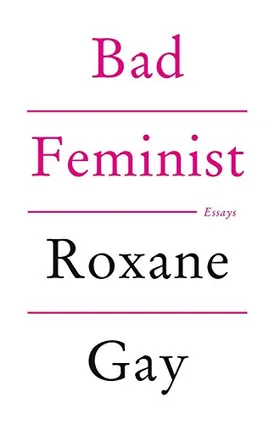Roxane Gay’s Bad Feminist is a manifesto for contemporary feminists written with wit and a sardonic sense of humor. This collection of personal and cultural essays is at times eye-opening, inspiring, heart-breaking, and tongue-in-cheek funny. In it, Gay provides an honest look into the cultural climate of feminism, and how it has been both celebrated and demonized.
Bad Feminist is an exploration of our culture’s need to pigeonhole feminism. Gay wrote this collection of essays to address the difficulty of being a feminist in a world where the feminist movement is both celebrated and stigmatized. She argues that there is no single definition of feminism, and the attempts to narrow the definitions of what makes someone a feminist do a disservice to the movement.
Gay begins the book with an exploration of her own position as a “Bad Feminist.” She explains that while she embraces the spirit of feminism, she also has her own set of flaws and imperfections. Gay explains that as a bad feminist, she is someone who cares deeply about women’s rights and equality, but who also may not always live up to the ideal of a perfect, perfect feminist. She encourages her readers to embrace their own badfeminist identities and to recognize that there is not just one definition of feminism.
Gay then moves on to discuss how she, and other feminists, have criticized the flaws and foibles of cultural stereotypes of femininity. Gay provides examples of how diversely women are represented in popular culture, including in books, films, and television shows. She emphasizes her concern that the representation of women in mainstream media is often limited and sexist, depicting them as either shallow wannabes or evil villains. She argues that films like Thelma and Louise and Bridesmaids are a step in the right direction, but that it does not reach far enough to challenge the societal norms of how women should be portrayed and depicted.
Furthermore, Gay considers the problem of intersectionality in the feminist movement. She argues that the fight for full equality must include the struggles that minorities and other disadvantaged groups face. She points out that women of color and other marginalized groups often face more difficult challenges than those encountered by the more privileged group. Gay implores her readers to consider the importance of recognizing and including the unique experiences of all groups in the struggle for equality.
Gay also offers a thoughtful analysis of the role technology has played in the advancement of feminist ideals. She argues that the accessibility of technology has allowed feminists to create a new platform to communicate and advocate for their cause. Gay encourages her readers to use technology to learn more about the feminist movement and to become more active participants in making sure that their voices are heard.
Finally, Bad Feminist is a frank examination of how feminism is often viewed through a negative lens by the public. Gay discusses the importance of challenging these conceptions and argues that it is possible to be a feminist without being “the perfect feminist.” Ultimately, she encourages her readers to accept their own complexities and imperfections, and to embrace their own imperfect versions of feminism. This collection of essays ultimately provides a fresh and necessary perspective on the ever-changing cultural landscape of feminism.

